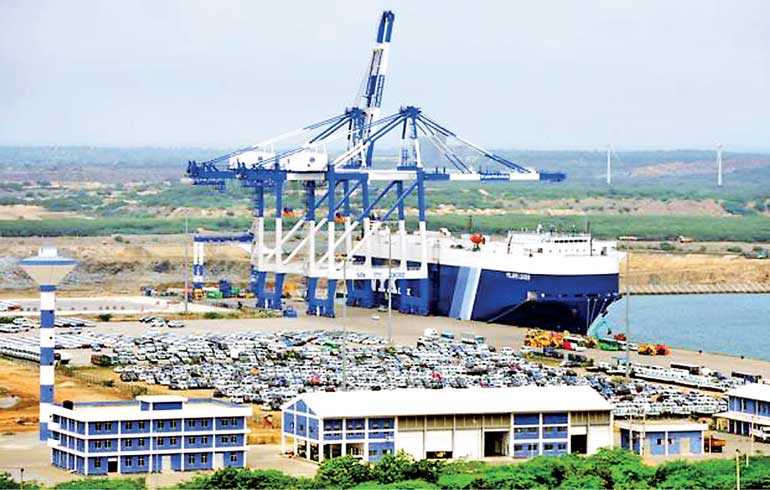Thursday Jan 01, 2026
Thursday Jan 01, 2026
Wednesday, 13 March 2019 00:00 - - {{hitsCtrl.values.hits}}

By Prof. Zhou Guping and Dr. Ni Hao
Since China proposed to build the Silk Road Economic Belt and the 21st Century Maritime Silk Road, now referred to as the Belt & Road Initiative, considerable attention has been attracted from the international community. 
As introduced by the head of NDRC (National Development and Reform Commission) at the Press Conference for the Second Session of the 13th National People Congress (6 March 2018), China has signed 171 cooperation agreements with 123 countries and 29 international organisations, including both developing and developed countries, as well as a great number of companies and financial institutions from developed countries to explore the third-party market jointly.
Regarding the infrastructure, programs on Gwadar Port, Hambantota Port, China-Laos’s railway, and Jakarta-Bandung high-speed railway have achieved great progress to promote connectivity. Zamir Assadi, a reporter from Pakistan, describes it as an unprecedented chance to the global economic communities offered by China. It needs to be further pointed out that the Belt & Road Initiative is not only about money and railways, as represented explicitly in the mass media. Instead, five correlated pillars, namely, policy coordination, facilities connectivity, unimpeded trade, financial integration, and people-to-people bonds are together regarded as the cornerstone of BRI. Among those, people-to-people bonds, which refers to the people-to-people exchanges on culture, education, sports, tourism, heath, laws, youth issues and other people’s livelihood related fields, is the one easiest to be neglected, whereas hardest to be achieved.
People-to-people bonds accounts for a large enough proportion in China’s policy priorities. As President Xi Jinping quoted many times, “Only when the hearts meet can they achieve enduring friendship”, “Amity between people holds the key to sound relations between states”.
Harmony is built on the basis of mutual understanding and cooperation between people. Promoting people-to-people bonds lays a solid foundation for economic and social cooperation, accumulates potential energy for building a community with shared future for mankind. The fascination of exchange reflects in the communication among diverse civilisation with different culture, custom and national conditions. Beyond doubt, Belt & Road Initiative possess not only the attributes of materiality, but spirituality, in nature to enhance mutual learning among civilisations with an open, mutual-respect and future-oriented mind.
Specially, China’s effort in heath cooperation with countries alongside the Belt & Road make tremendous achievements. Infectious disease control and cure, medical and health system reform, capacity building and talents cultivation are the main domains for heath cooperation. 
According to the varying regional demands, China carries out long-term cooperation plans, such as The Prague Declaration signed with central and eastern European countries, the project on building China-Laos Medical Service Community, and public health personnel joint training with Indonesia. Besides, five central Asian countries, Russia, Mongolia and China establish a medical service centre with joint efforts to provide high-quality care. Those projects brought tangible benefits to the common people, in most cases, are lack of health insurance schemes or quality healthcare.
Education matters anywhere, and concerns the future of this generation and our globe. Along the Belt & Road, in many developing countries, there is a great demand in Technical and Vocational Education (TVET). Receiving a certain level of vocational education is an important way for local people to improve their employability and obtain higher income.
Thus, in 2016, Ningbo Polytechnic set up an international training centre in Benin, an under-developed country located in West Africa, to train local employees for the development of Chinese-funded enterprises and promote the economic development of the host country. Also known as China- African (Benin) College of Vocational and Technical Education afterwards, it created a pioneering cooperation model in running schools and also had deep and broad implications for local human capital ecosystem.
Just in two years, the college equipped more than 400 students from Benin and surrounding countries with skills. As the dean of the college recalls, usually the last-year students get job offers from the local industrial park even before graduation, definitely they are “sweet pastry” in the labour market.
Nowadays, people are surprised to find that Confucius Institute is not the only paradigm of Chinese oversea education service, TVET is also gaining momentum to promote skill and talents exchange.
In the past five years, the outcome of Belt & Road Initiative has been fruitful, and more satisfactorily, policymakers are conscious of the significance of strengthening people’s sense of having gained. The generous B&R scholarship is provided at central government, local authorities and university levels, covering most of the expense in China and attract hundreds of thousands of applications each year. As the old Chinese saying goes, “Ten years to grow trees, but a hundred to cultivate people.”
Engineering and trade is easy, but sincere communication and true empathy is not. The implementation of the Belt & Road Initiative also needs time and true feelings. We here humbly appeal to build a spiritual silk road in the coming decades.
(The writers are attached to the China Academy of West Region Development, Zhejiang University.)